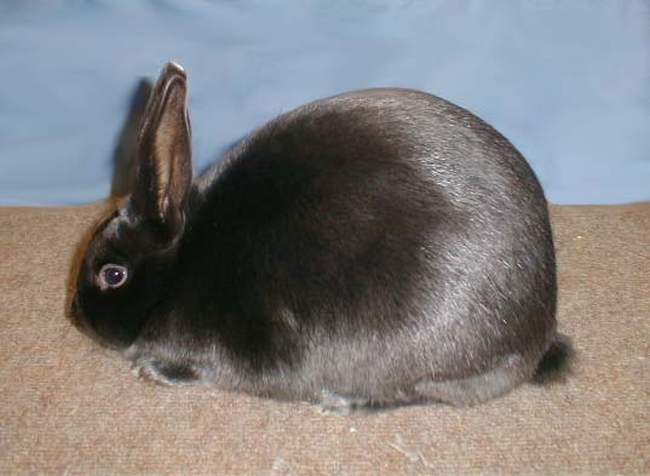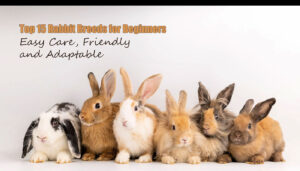
The Mini Satin Rabbit breed are the cutest mini rabbits with the softest coat and pretty little faces.
They do make good pets for families, elderly and rabbit fanciers.
They had a very rocky start and were at first called “Satinettes” and were bred to be a lot smaller than the version we have today.
BREED PROFILE OVERVIEW
|
|
|---|---|
| Breed Name: | Mini Satin |
| Other Names: | None |
| Country of Origin: | United States of America |
| Breed Purpose: | Exhibition and pets |
| Breed Size: | Small to medium |
| Breed Weight: |
Female/Doe: 3 to 4.5 lbs. Male/Buck: 3 to 4.5 lbs.. |
| Breed Color(s): | Black, Broken, Blue, Chinchilla, Chocolate, Chocolate Agouti, Copper, Himalayan, Opal, Otter, Red, White, Squirrel, Tortoise, Silver Marten, and Siamese |
| Physical Appearance: |
The Mini Satin rabbit breed has a commercial body shape which is compact and well rounded with powerful smooth hindquarters.
They have a small wedge-shaped head with long erect ears that touch at the base of the head and small reddish-brown eyes. Their coat is short, silky, quite thick with rollback type fur that has a satin sheen to it that is quite unique to this rabbit breed. They have a complex coat structure with a recessive gene that causes the satin sheen. However, this does not mean that their coat requires any special attention other than the usual grooming rituals. |
| Temperament: | Calm, gentle, docile and quite well mannered. |
BREED CHARACTERISTICS
- They have a decent sized litter and the females make very good mothers. Most rabbits have good maternal instincts and some breeds can be a bit testy and protective when they have young. They can also be uncharacteristically moody during mating season.
Their young open their eyes around 7 to 14 days with an average of 10 days after birth. When their eyes have opened, they can start to be introduced to food such as alfa pellets and water.
Even when the young start to eat it does not mean they are quite ready to be weaned from their mothers. The mothers will know when it is time to wean her young. It is important for the baby rabbit’s health, growth, immune system and development of a proper digestive system that they do not be removed from their mother for at least 8 weeks. They usually require her milk for a minimum of 8 weeks after birth.
Their average lifespan is 5 to 8 years although there have been some breeds that have lived to 10 years with the proper care.
| Good Pets? | They are very good pets for singles, seniors, families with older children, novices and good as an indoor pet rabbit. |
| Child Friendly? | Children should be supervised around animals and properly taught how to look after them and handle them. Rabbits can bite and scratch |
| Ideal Climate: | All climates – rabbits should never be left outside without proper shelter and housing that must be raised off the ground and predator safe. |
| Conservation Status: | Not Listed by the *ALC Status/Rarity: They are not listed by the American Livestock Conservancy |
| Recognized by the ARBA? | Yes, the American Rabbit Breeders Association recognizes sixteen color varieties of the Mini Satin Rabbit Breed. |
| Rabbit Associations/Clubs: | American Satin Rabbit Breeders Association |
| Where to buy them? | For an up to date list of registered breeders please contact the American Satin Rabbit Breeders Association. The USA Rabbit Breeders Directory is a useful resource to find breeders, clubs, and information about the breed. |
| Note: *ALC stands for American Livestock Conservancy | |
GENERAL INFORMATION
For a slicker more glossy or shiny pelt, it is advisable to groom them every two to three weeks. During the molting season, it is advisable to groom rabbits every week to remove stray hairs.
Rabbits can be quite lively and energetic and need quite a bit of exercise and stimulation. It is a good idea to have a nice safe and secure run for them to play in and stretch their legs.
Toys, tubes and various obstacle courses for them is a good way to help them expend some of their energy and they are really fun to watch at play.
They are also sociable animals that do like to have a friend or two to play with.
Regular health and critter check once a week or every second week should become a habit. This will help to keep your rabbit(s) in excellent condition and health. Grooming does not require a lot if their coats are low maintenance. But it is a good idea to give them a nice gentle brushing to help remove any excess hairs regardless of the length of their coats.
It is also a good idea to check on the state of their teeth to ensure that they are not too long and causing the rabbit any discomfort.
Rabbits teeth never stop growing and getting fresh hay on a regular basis helps to control the growth of their teeth.
Rabbits need a good diet of quality pellets that are filled with their daily nutritional requirements. They do love dandelions, cabbage and various fruits as a nice tasty treat.
Rabbits that have quite a short coat are not really at risk for most of the digestive problems long fur seem to cause rabbits. They can still get other ailments such as flystrike, ear mites or overgrown teeth. These can all be controlled/maintained or avoided altogether with the proper health and grooming care of the rabbit(s).
If you have two rabbits and do not want to breed them it is possible to spay female rabbits and neuter male rabbits.
The females can be spayed as young as four months old, but vets prefer to wait until they are at least six months old before doing so.
The young males can be neutered as young as found months old.
Rabbits, just like any other pet, should be dewormed on a regular basis. Check with your local vet for proper guidance on the administering of worm medication to your animals.
HISTORY
The satin gene is the gene in this rabbit breed that gives this rabbit and the Mini Satin rabbit breed their unique satin sheen coat.
A Mr. Walter Huey who had a rabbitry in Indiana found the first rabbits with this gene in a litter of Havana rabbits. Mr. Huey had wanted to improve his Havana breed and had started to selectively inbreed them which caused a new mutation in these rabbits’ offspring.
Mr. Huey decided to show these rabbits and they were put against the regular Havana’s, but the other breeders were not happy as they thought it was unfair to show these rabbits with the satin coats against the regular Havana rabbit breed.
The American Federation of Havana Breeders thought it would be a good idea to sponsor the new “Satin Havana’s”. With some dedication and effort, the Satins were developed, and the breed was further developed until it was accepted into the American Rabbit Breeders Association in 1956.
The first attempt at creating Mini Satins was in 1970 and was the efforts of a Mrs. Ariel Hayes of Troy, Michigan. She called the breed the “Satinette” these were created by the crossing of the Polish rabbit breed and the Satin rabbit breed. She worked on developing the Satinette breed for over twelve years before abandoning the project.
There were a few other attempts at the Satinette breed, but nothing really took off. In 1994 another attempt at the breed was made but they were bred to a larger size and the name was changed to “Mini Satin”. After a few more failed attempts the breed was finally accepted by the standard at a show in 2003 with various color varieties following suit between 2003 and 2006.
Video
USEFUL LINKS
- American Rabbit Breeders Association
- Fur Commission USA
- North American Meat Institute
- American Livestock Conservancy
- Animal Shelter (ASPCA)
- American Veterinary Medical Association
- American Animal Welfare Society
- American Animal Control
- American Society of Animal Science
- United States Department of Agriculture
- United States Department of Agriculture – Rabbit Meat
 Discover the Fascinating Lion Dwarf Hybrid Rabbit: Lionhead x Netherland Dwarf Mix
Discover the Fascinating Lion Dwarf Hybrid Rabbit: Lionhead x Netherland Dwarf Mix Argente Brun Rabbit – Everything You Need to Know
Argente Brun Rabbit – Everything You Need to Know American Fuzzy Lop Rabbit – Everything You Need to Know
American Fuzzy Lop Rabbit – Everything You Need to Know Satin Rabbit – Everything You Need to Know
Satin Rabbit – Everything You Need to Know Top 15 Rabbit Breeds for Beginners: Easy Care, Friendly, and Adaptable
Top 15 Rabbit Breeds for Beginners: Easy Care, Friendly, and Adaptable French Angora Rabbit – Everything You Need to Know
French Angora Rabbit – Everything You Need to Know Holland Rex Rabbit: A Perfect Blend of Holland Lop and Rex Breed
Holland Rex Rabbit: A Perfect Blend of Holland Lop and Rex Breed Silver Lop Rabbit: The Enchanting Result of Silver Fox x English Lop Cross
Silver Lop Rabbit: The Enchanting Result of Silver Fox x English Lop Cross Lilac Rabbit – Everything You Need to Know
Lilac Rabbit – Everything You Need to Know Chinchilla Angora: The Perfect Blend of Giant Chinchilla and Giant Angora Rabbits
Chinchilla Angora: The Perfect Blend of Giant Chinchilla and Giant Angora Rabbits Thrianta Rabbit – Everything You Need to Know
Thrianta Rabbit – Everything You Need to Know Lionhead-Angora Mix Rabbit: Charming Hybrid Pet
Lionhead-Angora Mix Rabbit: Charming Hybrid Pet